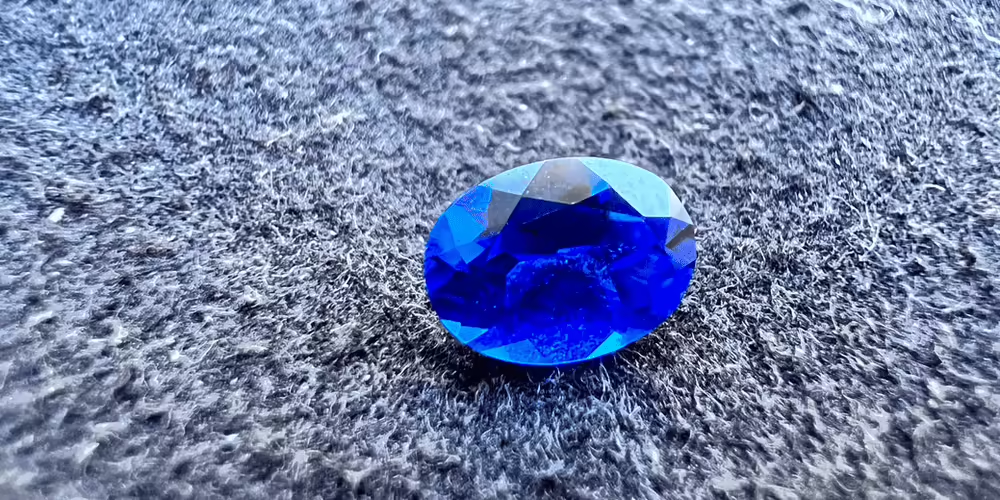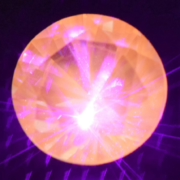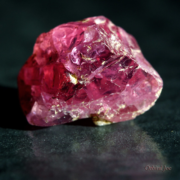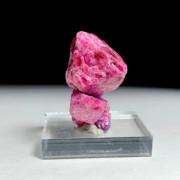Spinel: Properties, Uses and Virtues
Spinel: a little-known stone!
Spinel, a captivating gemstone of remarkable versatility, has enthralled admirers with its wide range of colours and enduring charm.
Known for its association with beauty and strength, spinel has graced the world of jewellery for generations.
Discover the geological origins, historical significance and metaphysical properties of this captivating gemstone.

Spinel: Table of contents
- Spinel Geological Formation
- Spinel Rough – Raw Beauty Revealed
- Sources – The Global Scope of Spinel
- Historical Significance of the Spinel – Through the Ages
- Metaphysical properties of Spinel – Illuminating energies
- Varieties of Spinel
- Spinel colors
- Durability and Wearability of the Spinel
- Spinel enhancements – Preserving natural beauty
- Synthetic Spinel – Nature in the Laboratory
- Imitations of Spinel – Discerning the Authentic
- Spinel care – Preserving natural beauty
Spinel Geological Formation
Spinel, a fascinating gemstone, is formed through various geological processes, frequently found in metamorphic and igneous rocks. Its creation involves complex interactions between minerals, heat and pressure, resulting in the formation of these exquisite crystals within the Earth’s crust.
Spinel Rough – Raw Beauty Revealed
The appeal of raw spinel crystals lies in their raw, unaltered state, highlighting their natural brilliance and unique crystalline structures. Gemologists appreciate their distinctive geometric shapes, with a variety of octahedral crystal forms.
Sources – The Global Scope of Spinel
Spinel’s diverse spectrum of colours can be found all over the world, from Myanmar to Sri Lanka to Australia. Rough spinel is generally found in placers with corundum. These sources contribute to the stone’s varied palette, adding to its appeal in jewellery.
Historical Significance of the Spinel – Through the Ages
Spinel, a captivating gemstone with a rich history, has had significance throughout various cultures and eras. Its bewitching beauty and vibrant colours have contributed to its appeal, making it a stone of enduring admiration.
Antiquity :
The history of spinel goes back to ancient civilisations. The stone was often confused with other gemstones because of its similarity, leading to cases where spinel was mistaken for rubies and sapphires.
In particular, the “Black Prince’s Ruby”, inlaid in the British Imperial Crown of State, is actually a red spinel. This stone has been part of the British Crown Jewels for centuries, and is said to have been acquired by Edward, Prince of Wales (known as the Black Prince) during his campaigns in Spain.
Medieval and Renaissance periods :
During the medieval and Renaissance periods, spinel was cherished for its resemblance to rubies and sapphires. Its use in jewellery and royal ornaments was a testament to its perceived value. In the 14th and 15th centuries, spinel was used alongside other precious stones in ecclesiastical objects, crowns and personal accessories, underlining its esteemed status.
19th Century :
Spinel continued to hold its appeal in the 19th century. Queen Victoria herself owned a collection of spinel jewellery, demonstrating her popularity among royalty. Its deep red hues and versatility have made it a favourite choice for both men’s and women’s jewellery, adding a touch of sophistication and elegance to a range of creations.
Modern period :
In more recent times, spinel’s reputation has endured, and its appreciation has grown among gem enthusiasts and collectors. Its historical significance is reinforced by its presence in museums and private collections. Today, spinel is sought after for its captivating colours, durability and unique crystalline structure.
Metaphysical properties of Spinel – Illuminating energies
Spinel is believed to embody strength, protection and vitality. Associated with the Root Chakra, it is said to anchor and stabilise the wearer, offering a sense of security and courage. It is also thought to protect against negativity and promote resilience in difficult times.
Varieties of Spinel
Spinel comes in an impressive range of colours, but there are no varieties per se in the world of jewellery. However, there are other mineral varieties that are not widely used in the jewellery industry, such as chromite and ceylonite.
Spinel colors
The captivating colours of spinel evoke a sense of wonder, each hue highlighting a unique aspect of its beauty. From intense reds reminiscent of ripe berries to soothing blues evocative of the sky, the colours of spinel offer a kaleidoscope of natural creativity. With the exception of pure yellow and green, spinel comes in a multitude of hues, making it an ideal choice for jewellery.
Durability and Wearability of the Spinel
With a hardness of 7.5 to 8 on the Mohs scale, spinel is a durable gemstone that can withstand everyday use while retaining its brilliance. Its remarkable strength and bright colours make it a popular choice for a wide variety of jewellery designs.
Spinel enhancements – Preserving natural beauty
Spinel is generally untreated and cherished in its natural state, allowing its intrinsic beauty to shine through. This natural elegance means that each spinel gemstone has its own unique character, making it a popular choice for those who appreciate authenticity.
It should be noted that certain treatments such as fracture filling or heat treatment exist for spinel, but they are rare.
Synthetic Spinel – Nature in the Laboratory
Synthetic spinel, created using advanced laboratory techniques, mimics the crystalline structure and appearance of natural spinel. Synthetic spinels are readily available on the market. Colourless synthetic spinel has even been used as an alternative to diamonds, as natural clear spinel always has a shade and is not perfectly colourless.
Imitations of Spinel – Discerning the Authentic
As a prized gemstone, spinel can be subject to imitation or misrepresentation, including synthetic stones, glass, ruby, sapphire, garnet, tanzanite and iolite. To ensure authenticity, it is essential to buy spinel from reputable retailers and obtain the appropriate certifications.
Spinel care – Preserving natural beauty
Caring for spinel jewellery preserves its timeless beauty. To maintain their lustre, avoid exposing spinel to aggressive chemicals and extreme temperatures.
Clean the stone gently using soapy water and a soft brush.
Store spinel jewellery separately from other precious stones to avoid potential scratches and preserve its brilliance.
Mechanical cleaning can generally be used on spinel, but ultrasound should be used with care and knowledge. When in doubt, it’s best to abstain.





Leave a Reply
Want to join the discussion?Feel free to contribute!